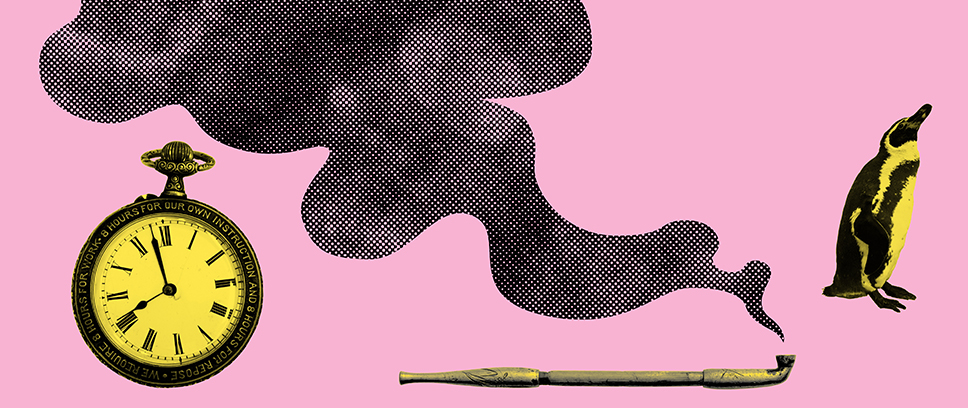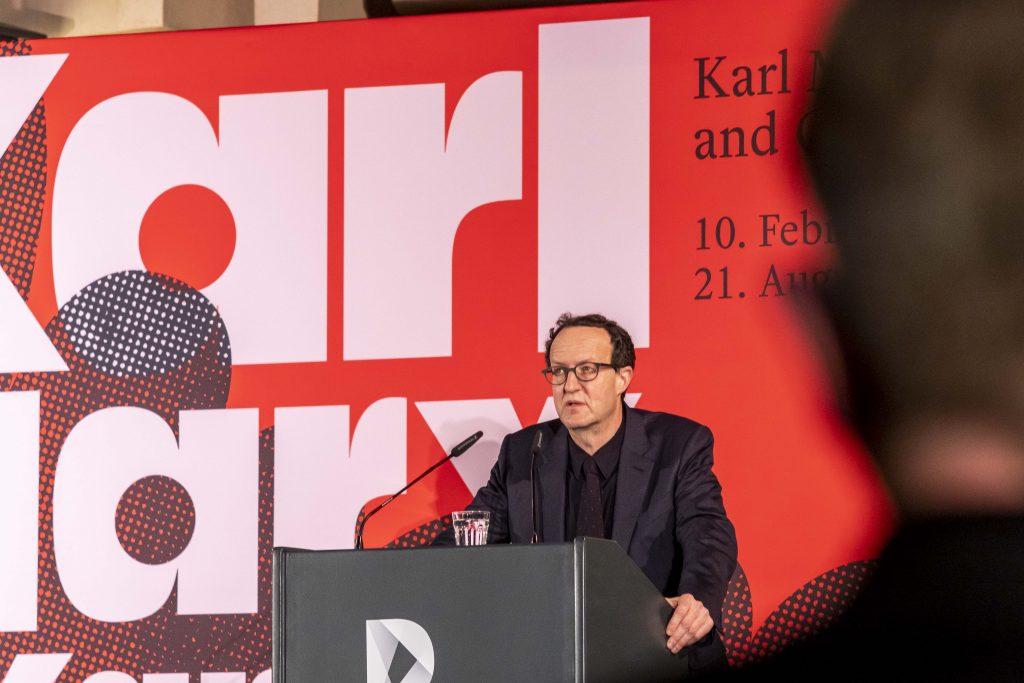
Karl Marx and Capitalism
Opening speech of Raphael Gross
10 February 2022
The exhibition “Karl Marx and Capitalism” opened on 8 February 2022. On this occasion Raphael Gross, President of the Deutsches Historisches Museum, spoke about the concept of the exhibition.

Eleven persons – as Branko Milanovic points out in our catalogue – gathered at the funeral in London’s Highgate Cemetery when Karl Marx was laid to rest there on 17 March 1883.
His grave was plain, and before the backdrop of what you perhaps remember, this was astonishing. Near the unpretentious grave site of 1883, namely, a monumental tomb was erected in that cemetery in 1956 upon the initiative of the Communist Party of Great Britain and with financial support from the Soviet Union. The memorial shows Marx with his characteristic features, the flowing beard and imposing thatch of hair. The difference between the two graves reflects almost exactly the difference between the modest awareness and presence of Marx in the 19th century and his later posthumous impact. In the exhibition we take three steps backwards, as it were: we shed light on Marx in the time before his works were widely disseminated by his friend and co-author Friedrich Engels. And of course we go back to before the time when Lenin elevated Marx to the ideological father of the October Revolution. And thirdly, we return to before the time when Marx had been made a worldwide icon by the Communist International in its struggle against imperialism in the “Third World”, in China, Vietnam, Yugoslavia, Cuba, Angola, Ghana, South Africa, and elsewhere.
He had not achieved any of this during his lifetime, which is also reflected in his original plain grave. The difficulty in historicising the Karl Marx of the 19th century – which means perceiving him so that the historical distance also becomes a source of new findings and experiences with respect to the present – has something to do with the peculiar difficulty we have when we try to historicise the notion of capitalism. We all have a certain idea of what capitalism is – just not all the same idea. That motivated me to show an exhibition in the DHM that takes up the topic of capitalism. A historically exciting way of accessing this question seems to me to focus on two figures that are not normally seen in connection with one another: Karl Marx and Richard Wagner.
For many people these two prominent figures evidently offer attractive explanations for the problems of capitalism. But things are often simplified in a way that appears to provide easy solutions. On the one hand, through the mechanisms of capital. But then also through the supposed domination by surreptitious powers and especially by the Jews.
As with us today, Karl Marx and Richard Wagner had completely different understandings of capitalism. In fact, the concept of capitalism as we know it was not available to them at the time. In the 20th century, Marxism referred back to the teachings of Marx; Marxism became the ideology of states that committed torture and murder in the name of communism and socialism. In the 20th century, movements invoked the name of Wagner that were directly connected with massive crimes and radical ethnic anti-Semitism, followed by National Socialism and the Holocaust. Adherents and opponents of Marx and of Wagner interpret these connecting lines from the 19th to the 20th century in extremely different ways. If by examining the historical context our exhibition contributes something towards a re-examination of the questions of these connecting lines and perhaps enables us to see the significance of Marx and Wagner for the present day in a new context, then we have achieved a great deal, I believe, for a historical exhibition.